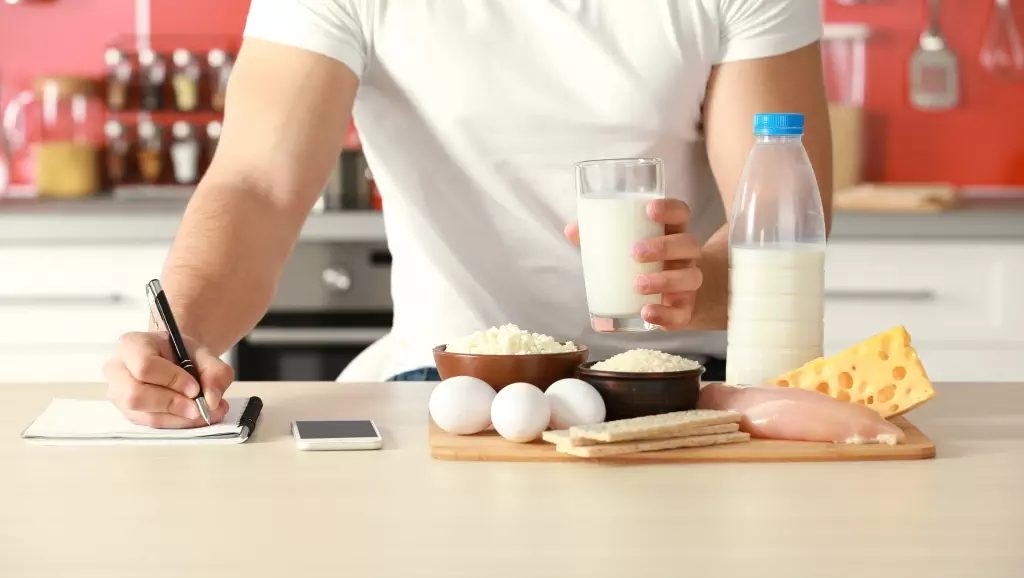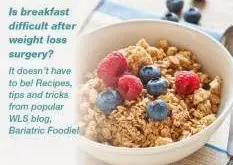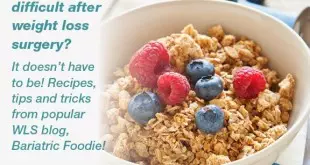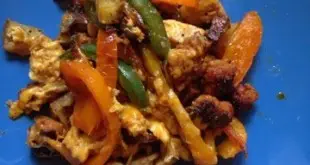So you land here on Bariatric Foodie and you see a recipe you think is AWESOME!
One problem – there’s no nutrition information.
You scroll up the post, down the post, up the post again. Nope. You haven’t missed it. Where is it???
Dear Foodies, you are not missing it. It is not there. And, yes, there are reasons! Here they are.
Reason #1: Let’s be real. To achieve long-term success after weight-loss surgery you need to consistently run the “stats” on your recipes. If I don’t provide them, you kinda have to do that.
And that’s an important thing to note because far too often I see folks rely just on the data in the recipe. Well what happens when we decide to try a recipe? We change it! Which brings me to my next point.
Reason #2: When you change the recipe (and you will) the stats change – and they can change a LOT.
I’ve seen folks make one or two really simple changes to recipes that threw the caloric ratios off. Sometimes changes can infuse more carbs than you want, or simply reduce the overall protein. Either way, you need to know that.
Reason #3: The ingredients I use may not be ones you even have access to.
I remember in particular when I started working with jicama. Folks had ZERO idea where to get it, as many local stores didn’t carry it. Same with TVP (textured vegetable protein). Again, when you sub stuff, it changes things. You need to know how those changes impact your recipe.
BONUS REASON: I could be lying to you…
I mean, I’m not…but still. I’ve seen more than my fair share of recipes that don’t add up with stats. Fun fact: 1 gram of carbohydrates = 4 calories. So something that 10g of carbs cannot be less than 40 calories, and yet I see recipes like that all the time, where the numbers just straight up do not make sense. And you wouldn’t know that unless you had developed a deeper understanding of tracking recipes. Which you can get by…running your own stats, all the time!
“So what? All your recipes are useless, Nik???”
Not at all. In reality you don’t need to know what the stats of my recipes are to determine if you want to give them a try. Remember, the Bariatric Foodie mantra is “play with your food!” The very first part in that process is always awareness. In particular you need to be aware of:
- What food works in your gut and what does not.
- What foods overall are a good choice and which ones will always be a splurge.
- Finally, you need to know your own nutritional needs, based on your relationship with your bariatric program.
If you know these things, you should be able to look at any of my recipes and know if it is likely a good choice for you. Then your very NEXT step should be…to run the numbers!
Here’s what I can promise you…
Bariatric Foodie recipes will always strive to be:
- High in protein
- HighER in protein than carbs (although this doesn’t always happen)
- Use mostly beneficial fats, and where I don’t, I use “splurge fats” judiciously
- When I use splurge ingredients, I always try to give you alternatives that may work better
- I try to never promote excess sugar (I don’t use table sugar at all in my recipes) or the over-consumption of simple carbohydrates
That’s how I approach recipes. But what’s more important is how YOU approach recipes because, as I’ve said several times here, you will change the recipe (you just will!)
So that’s why I don’t provide nutrition information. And I won’t. If that means you won’t come to Bariatric Foodie for recipes, I guess I have to accept that. But I don’t apologize! Instead, I’ll focus my energy where it’s best used – on exploring creative ways to have all the flavors I love after weight loss surgery, and sharing the results with you!
And if you need help learning how to figure out stats…
I’m here for you! This super-short primer will take you step-by-step through the process of running your own stats on food.
Good luck and…play with your food!
 Bariatric Foodie Play with your food
Bariatric Foodie Play with your food




Thank you! It makes me crazy when people rely on the stats someone has posted with their recipe … yours most likely NOT have the exact same stats as the original recipe. No matter how closely I follow a recipe, I always calculate my own nutritional info. Thanks for putting into words why I re-do the stats every time.
Nik or Jen I have a question on serving size . If you are trying to fiqure nutrition values and it ask for number of sevings, how do you figure the serving size to be able to know how many servings are in your recipe? Example your protien pumpkin loafs, is one serving the whole mini loaf or is the loaf cut into like four servings?
Thank you
Masf1220@gmail.com
Mary Ann
Hi Maryann,
This is going to drive you nuts, but that really is for YOU to decide. For me a whole loaf is a serving and I can eat that much. For you it may be half a loaf. But with the loaves if you start with one loaf being a serving to see how the nutrition shakes out, you can go from there to determine what YOUR serving is. With recipes like casseroles, go with the amount you either can or have been told to eat.
But each of us has our own conception of what a portion is, which is one reason I will not define that for you!
Good luck on your kitchen endeavors.
Nik